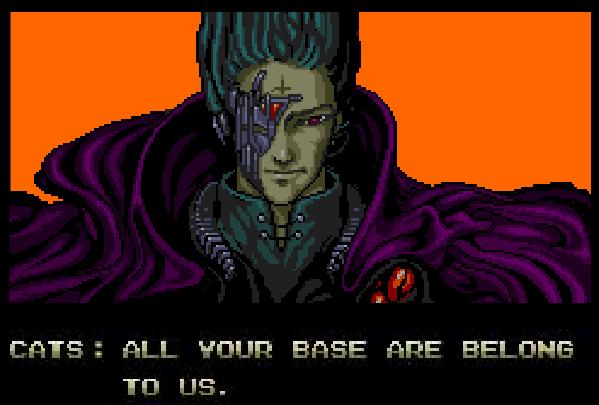Ask some people why Windows Vista failed and they will tell you that most of the problem came from hardware compatibility. I don’t remember ever having problems with Vista back when I used it. Then again I was running it on a brand new computer with the OS in question preinstalled.
And that’s another thing, I think you’re pretty much expected to upgrade your hardware at least every few years. I’d like to think that the people who had problems with Vista kept the same white-box PC they’ve had since 98SE, or even 95. Vista ran great if you had the right hardware. Maybe if Microsoft had optimized their OS even for XP-era machines it would have seen greater adoption.
I also really liked the Aero glass theme, it made younger me feel like I was in the future. Those gadgets at the side of the desktop were pretty cool too. Overall I think it was definitely ahead of its time, and with support for current software and hardware, would have been a solid choice for average computer users today.
When people say Vista was bad, they’re not talking about the operating system itself. They’re talking about the user experiance and context at the time:
-
Most people forget we were all on the cusp of switching from x86 hardware to AMD64. It was a relatively easy transition, but it was a jump that provided some hard hurdles (drivers) everyone had to jump together. Some things were not automatically compatible. You would likely have to throw away some piece of otherwise perfectly functional hardware to upgrade. People didn’t like that.
-
Also, we were also switching from single core to multiple-core computing. Software had to be written to specifically take advantage of this and often it wasn’t. So even if you had the latest and greatest hardware, the performance gains were often disappointing.
-
The driver models had to change because Win XP was a security nightmare for most people. Browser security had completely been neglected by Microsoft in favor of pushing their ActiveX controls in IE6 and IE7. The entire security model had to change, but the UAC prompts were absolutely out of control. Still, it really was better than getting wrecked by malware.
-
microsoft pushed new file formats with Office 2007 for absolutely hostile reasons and also transitioned to the ribbon interface. These might have been technical improvements, but they were more compatibility hoops people had to jump through that they were frustrated by.
-
Apple was thriving. iPods were in everybody’s pockets and the first iPhone had launched at exactly the same time and was changing how people thought about computers. Vista was “more of the same” in all the wrong ways. Where was the innovation? Gmail launched in 2004, why couldn’t Microsoft make a competing offer?
-
Finally all the cool, futuristic features that had been hinted at with Windows Longhorn were cut from Vista. If you were someone who followed those things, Microsoft over-promised and under-delivered.
Ballmer-led Microsoft had mismanaged their core products for years and it all came to a head with Vista. The consumer frustration was palpable and coincided with several architecture and forced UI changes that really made it hard for people to fall in love with Vista. Individually each problem wouldn’t have been a deal breaker but swallowing all the required pills at once left a sour taste in people’s mouths and had them looking at alternatives. It’s no coincidence that macbook and netbook sales rose sharply over the next few years.
Vista made me switch to Mac back then.
-
I bought a brand new desktop with Vista preinstalled. I had a 3 year old scanner that wouldn’t work with it. That seemed reasonable. My 2 month old, $500 printer wouldn’t work with it either. None of my Games would work with it. Most of the software I had wouldn’t work with it. I had to buy a new printer, scanner, and software which was very expensive. I just tossed my games, which I regret because there are emulators that can run them now.
It also had major issues, and would crash a lot. Most of the new “features” didn’t actually work. I had it less than a year before I switched to Linux.
My son is into retro computing. He tells me that eventual Vista updates made it much more stable and usable, but I didn’t have it long enough to get those updates.
That pretty much ended my relationship with Windows. XP had me thinking that maybe Microsoft wasn’t that bad, but Vista left me with such a bad taste in my mouth that I could never buy another Windows machine.
Vista’s fragmentation was one of it’s fatal flaws. Microsoft started tripping thinking they were selling fast food not operating systems. Starter, Home Basic, Home Premium, Business, Enterprise, and Ultimate. JESUS WEPT MAN SIX FUCKING EDITIONS.
Yeah, I’m no MS fanboy at all, but Vista really wasn’t that bad.
Most of the complaints were because of crappy hardware manufacturers putting out systems that were only meeting the minimum specs to run Vista. Those “Walmart special” PCs usually had 512 MB RAM and a low-quality Seagate drive. That, and hardware vendors with crappy driver support.
Once it booted to the desktop, your 512 MB was gone. As soon as you try to launch an application, it would start swapping nonstop to disk and everything just crawled. That put a lot of wear and tear on the disk which eventually failed because it was low quality to start with.
I worked in a repair shop back in Vista’s heyday, and the fix was always the same: Give it at least a GB of memory, replace the failing Seagate drive, reinstall, and it ran like it should have when it was new.
This one. Most systems in the spec didn’t have the RAM to run aero effectively, and ran like shit. If you had 1-2GB of RAM, it worked fine; just you had less of that RAM available to allocate to the same apps that worked great under XP. If you were lucky enough to have a 64-bit processor, Vista was actually pretty nice, compared to the XP 64-bit edition and the driver nightmare that entailed.
Windows Vista SP1 was essentially perfect for me. I had a dual core CPU and 4GB of RAM.
Manufacturers were really bad. That’s one of the reasons Windows 7 had a huge emphasis on performance for low specs.
Those gadgets at the side of the desktop were pretty cool too.
There’s a Rainmeter skin called “Gadgets” which replicates that experience.





